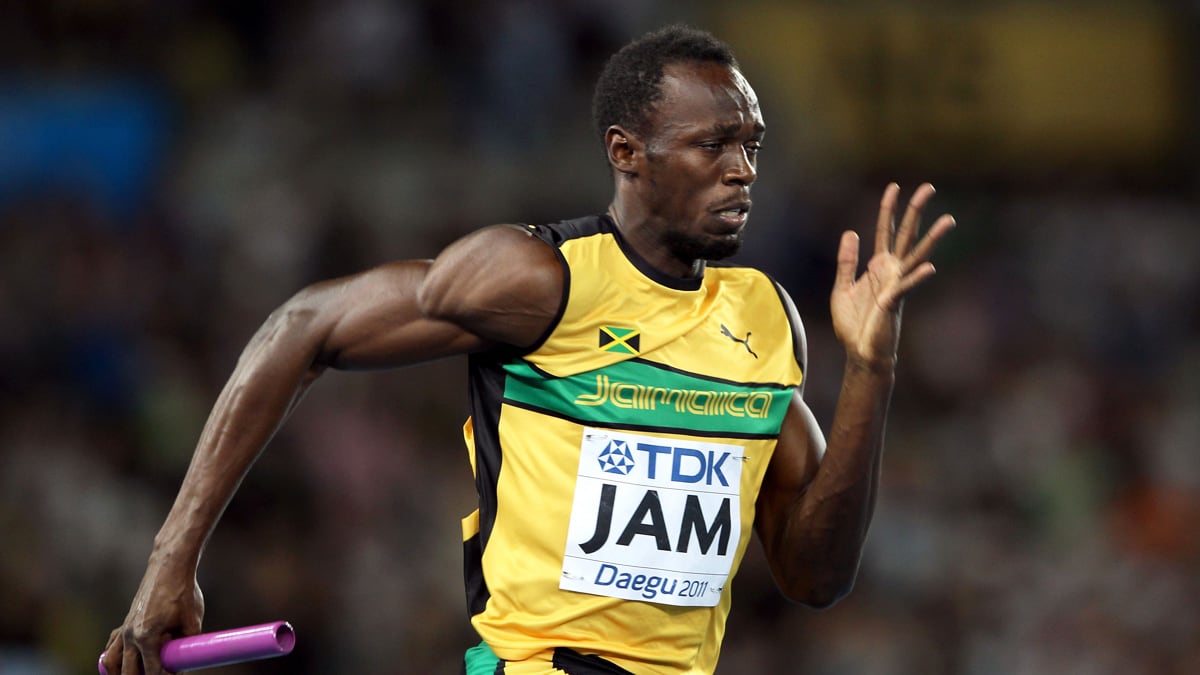Usain Bolt is the best human sprinter there has ever been. Yet, few would have guessed that he would run so fast over 100m after he started out running the 400m and 200m races when in his mid teens. His coach decided to shift him down to running the 100m one season so as to improve his basic sprinting speed.
No one expected him to shine there. Surely he is too big to be a 100m sprinter? How wrong they were. Instead of shaving the occasional hundredth of a second off the world record, he took big chunks out of it, first reducing Asafa Powell’s time of 9.74 s down to 9.72 in New York in May 2008, and then down to 9.69 (actually 9.683) at the Beijing Olympics later that year, before dramatically reducing it again to 9.58 (actually 9.578) at the 2009 Berlin World Championships. His progression in the 200m was even more astounding: reducing Michael Johnson’s 1996 record of 19.32 s to 19.30 (actually 19.296) in Beijing and then to 19.19 in Berlin. These jumps are so big that people have started to calculate what Bolt’s maximum possible speed might be.
Unfortunately, all the commentators have missed the two key factors that would permit Bolt to run significantly faster without any extra effort or improvement in physical conditioning. “How could that be?” I hear you ask.
The recorded time of a 100m sprinter is the sum of two parts: the reaction time to the starter’s gun and the subsequent running time over the 100m distance. An athlete is judged to have falsestarted if he reacts by applying foot pressure to the starting blocks within 0.10 s of the start gun firing. Remarkably, Bolt has one of the longest reaction times of leading sprinters—he was the second slowest of all the finalists to react in Beijing and third slowest in Berlin when he ran 9.58. Allowing for all this, Bolt’s average running speed in Beijing was 10.50 m/s and in Berlin (where he reacted faster) it was 10.60 m/s. Bolt is already running faster than the ultimate maximum speed of 10.55 m/s that a team of Stanford human biologists recently predicted for him.
In the Beijing Olympic final, where Bolt’s reaction time was 0.165 s for his 9.69 run, the other seven finalists reacted in 0.133, 0.134, 0.142, 0.145, 0.147, 0.165 and 0.169 s. From these stats it is clear what Bolt’s weakest point is: he has a very slow reaction to the gun. This is not quite the same as having a slow start. A very tall athlete, with longer limbs and larger inertia, has got more moving to do in order to rise upright from the starting blocks. If Bolt could get his reaction time down to 0.13, which is very good but not exceptional, then he would reduce his 9.58 record run to 9.56. If he could get it down to an outstanding 0.12 he is looking at 9.55 and if he responded as quickly as the rules allow, with 0.1, then 9.53 is the result. And he hasn’t had to run any faster!

This is the first key factor that has been missed in assessing Bolt’s future potential. What are the others? Sprinters are allowed to receive the assistance of a following wind that must not exceed 2 m/s in speed. Many world records have taken advantage of that, and the most suspicious set of world records in sprints and jumps were those set at the Mexico Olympics in 1968, where the wind gauge often seemed to record 2 m/s when a world record was broken. But this is certainly not the case in Bolt’s record runs. In Berlin his 9.58 s time benefited from only a modest 0.9 m/s tailwind and in Beijing there was no wind, so he has a lot more still to gain from advantageous wind conditions. Many years ago, I worked out how the best 100m times are changed by wind. A 2 m/s tailwind is worth about 0.11 s compared to a no-wind performance, and a 0.9 m/s tailwind 0.06 s, at a low-altitude site.
So, with the best possible legal wind assistance and reaction time, Bolt’s Berlin time is down from 9.53 s to 9.47 s and his Beijing time becomes 9.51 s. And finally, if he were to run at a high-altitude site like Mexico City, then he could go faster still and effortlessly shave off another 0.07 s. So he could improve his 100m time to an amazing 9.4 s without needing to run any faster.
Excerpted from MATHLETICS: A Scientist Explains 100 Amazing Things about the World of Sports by John D. Barrow. Copyright © 2012 by John D. Barrow. With permission of the publisher, W.W. Norton & Company, Inc.






